RS Aggarwal Class 11 Solutions Chapter 5
RS Aggarwal Solutions for Class 11 Chapter 5 – Complex Numbers and Quadratic Equations
RS Aggarwal Class 11 Solutions Chapter-wise – Free PDF Download
It is essential that you use RS Aggarwal Class 11 Chapter 5 Solutions if you have difficulty understanding this chapter. Quadratic equations are important not only for CBSE exams but also for entrance exams like BITSAT, JEE, NEET, IPU-CET, etc. In Chapter 5 of RS Aggarwal’s book, you’ll learn a little bit about things like doing math with complex numbers, finding the roots of quadratic equations, and figuring out what kind of equations they are.
There are about 142 questions in the 7 exercises in this chapter. These questions are about important things like the algebra of complex numbers, modulus, the conjugate of complex numbers, solving quadratic equations, etc. The RS Aggarwal Solutions book also goes into detail about the topics and shows how they are solved. You need to work on all of the chapter’s questions in order to do well on your tests and learn more about the chapter.
The Utopper team is here to assist you in any way they can in order to make the course material as simple as possible for you with free study materials like Revision notes, Important questions or many more. We have experts in the field who will answer all of your questions and help you understand them by giving you a full explanation for each one. Here is a short summary of the chapter to help you quickly go over its main ideas.
Click here to Buy Online The RS Aggarwal Class 10 Book Now
RS Aggarwal Class 11 Solutions Chapter 5 Complete PDF






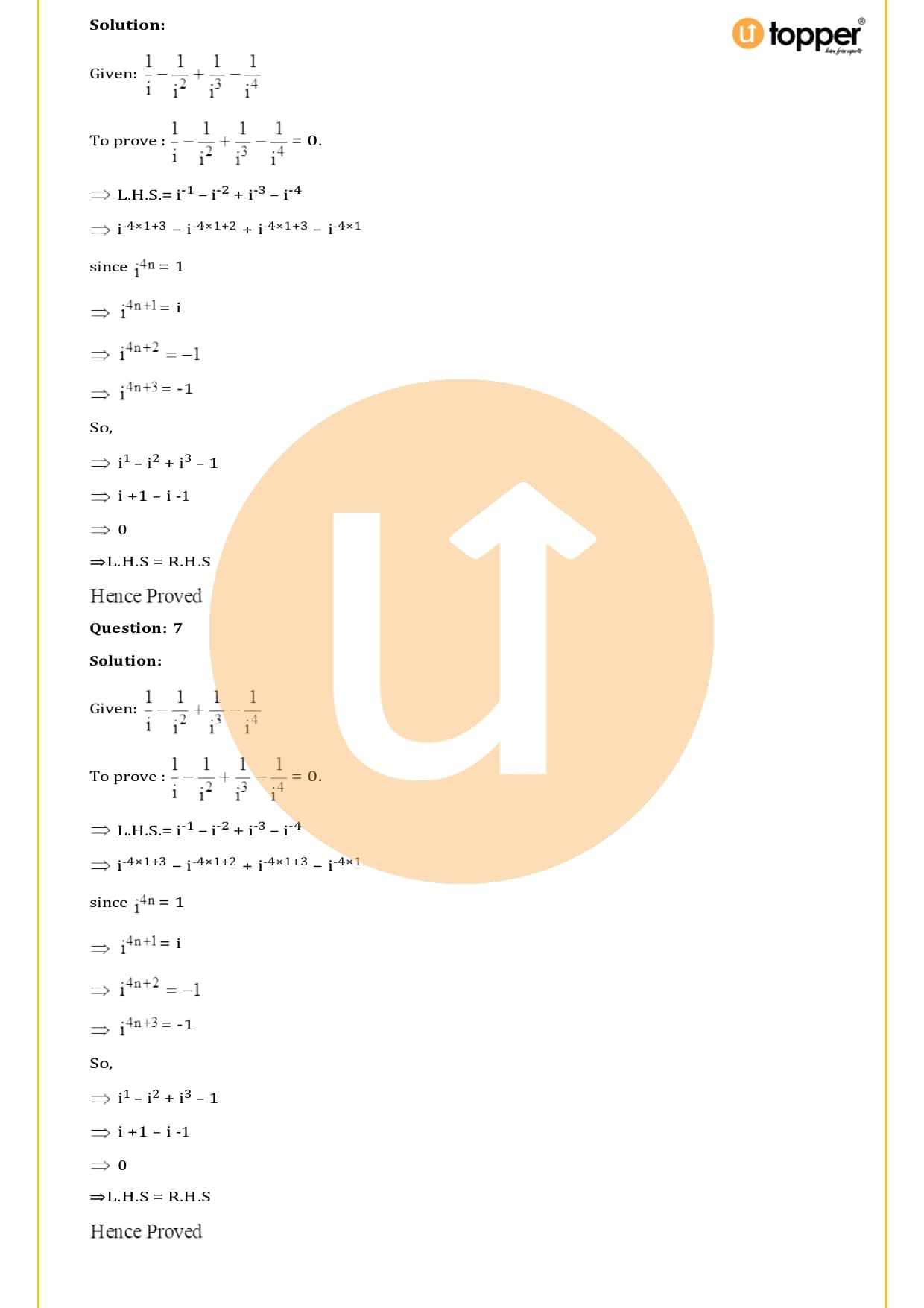

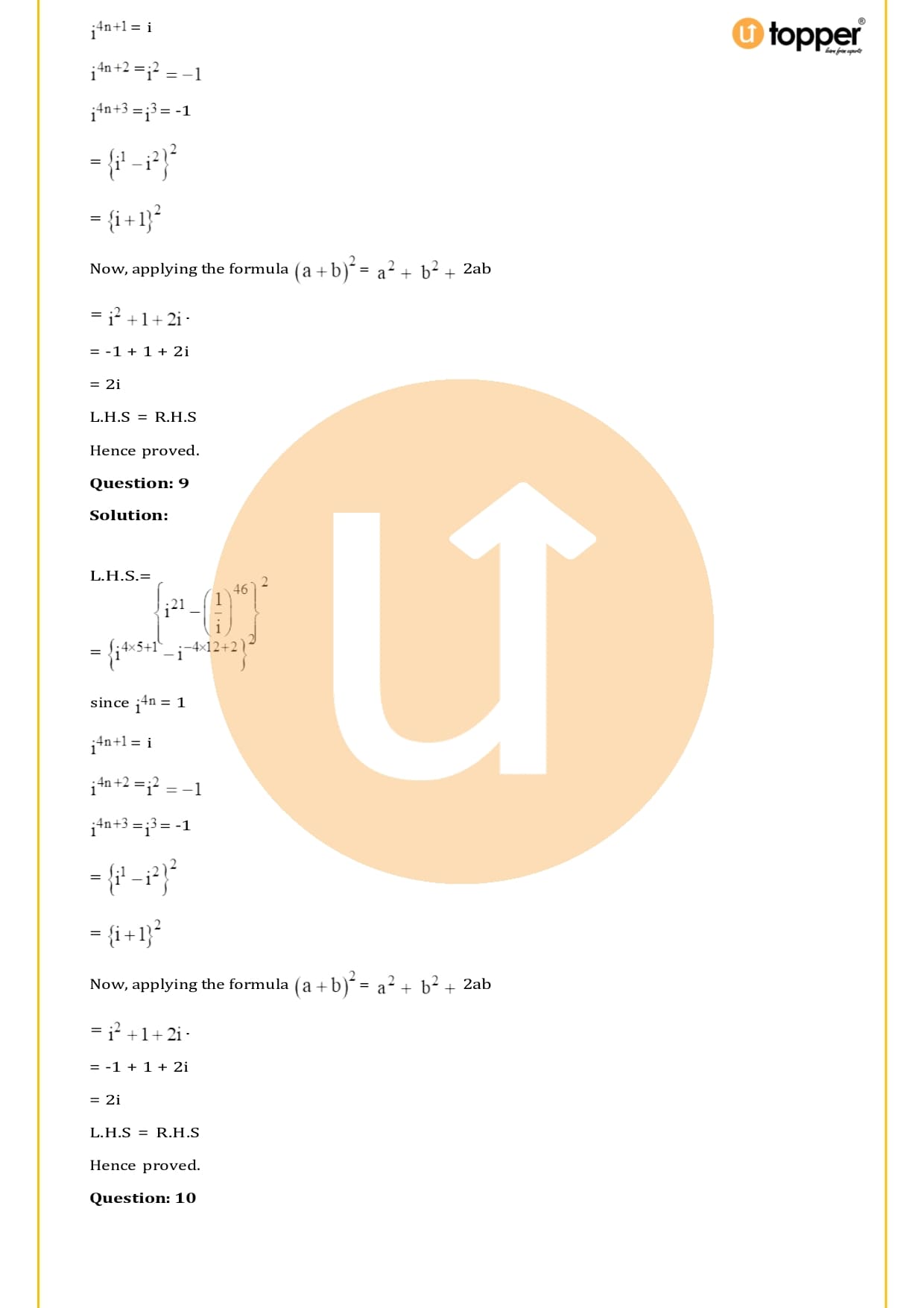

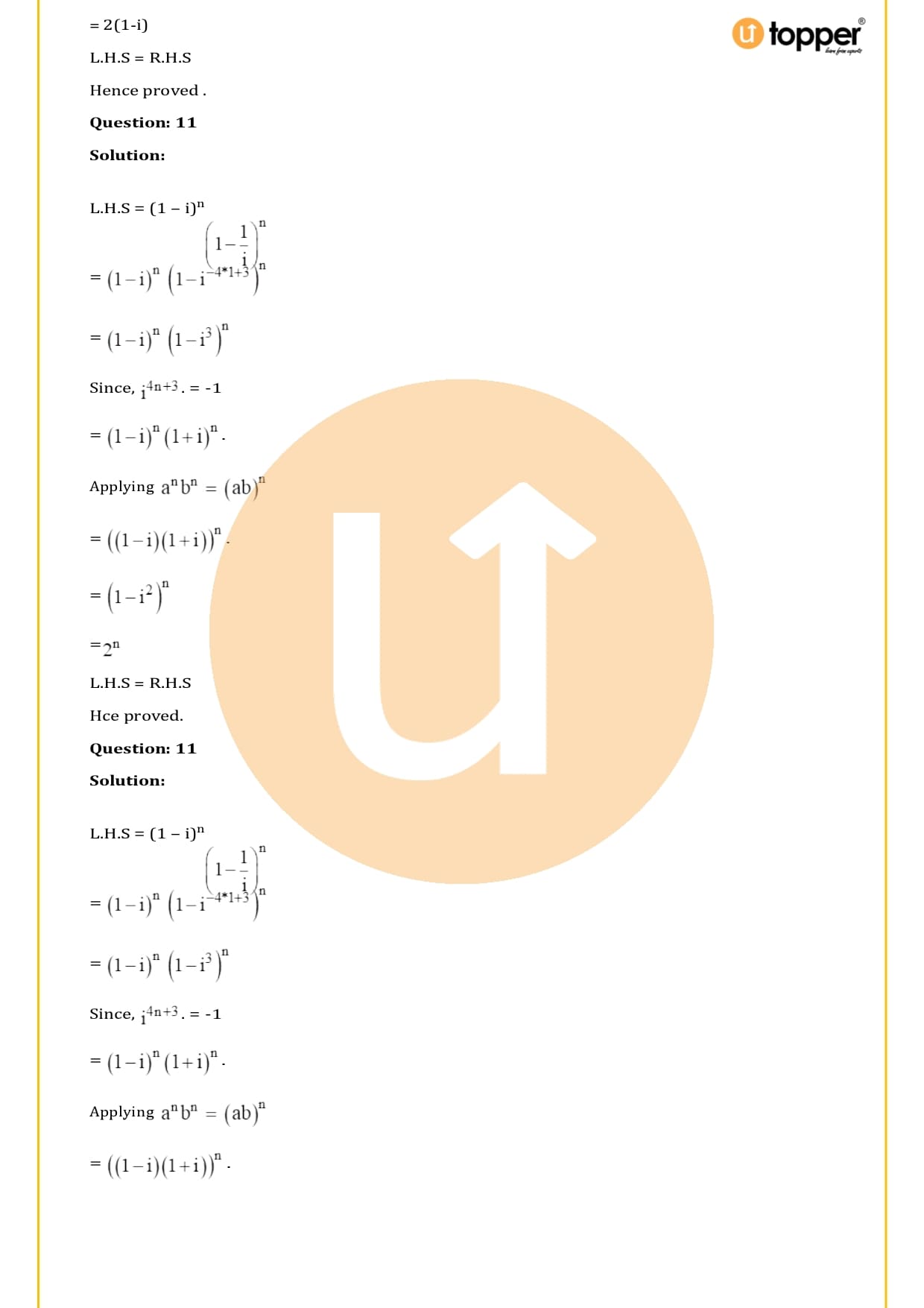







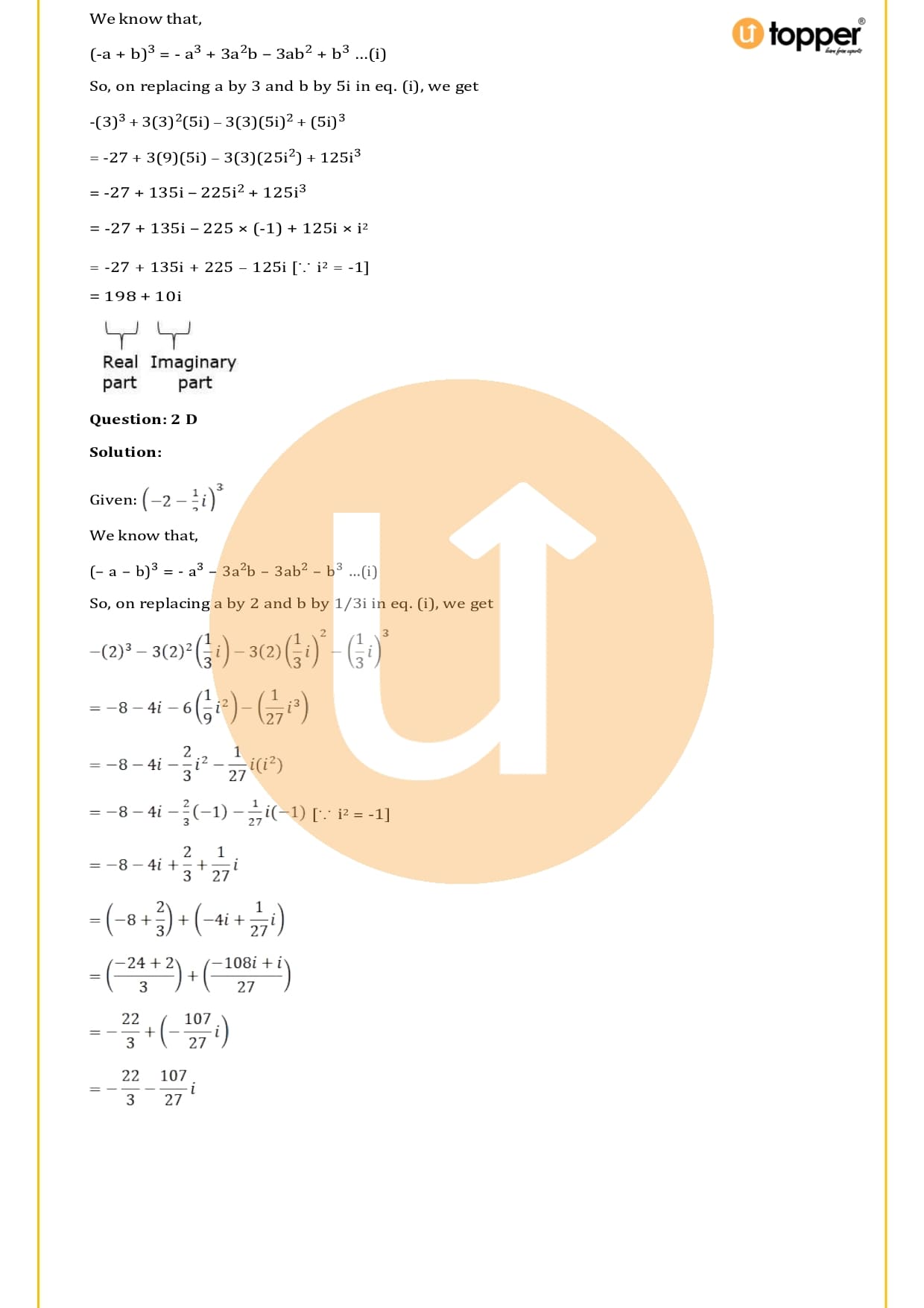
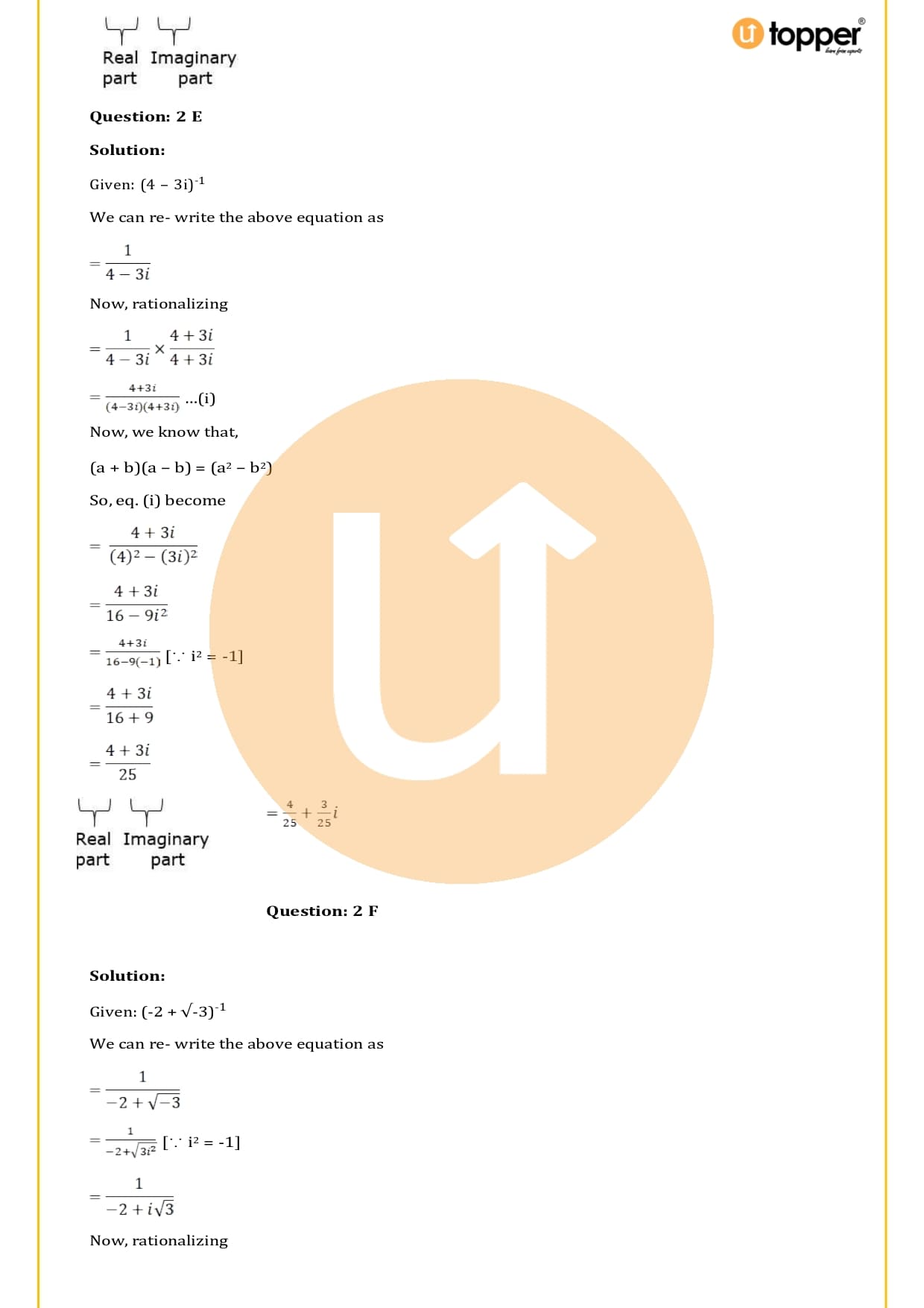


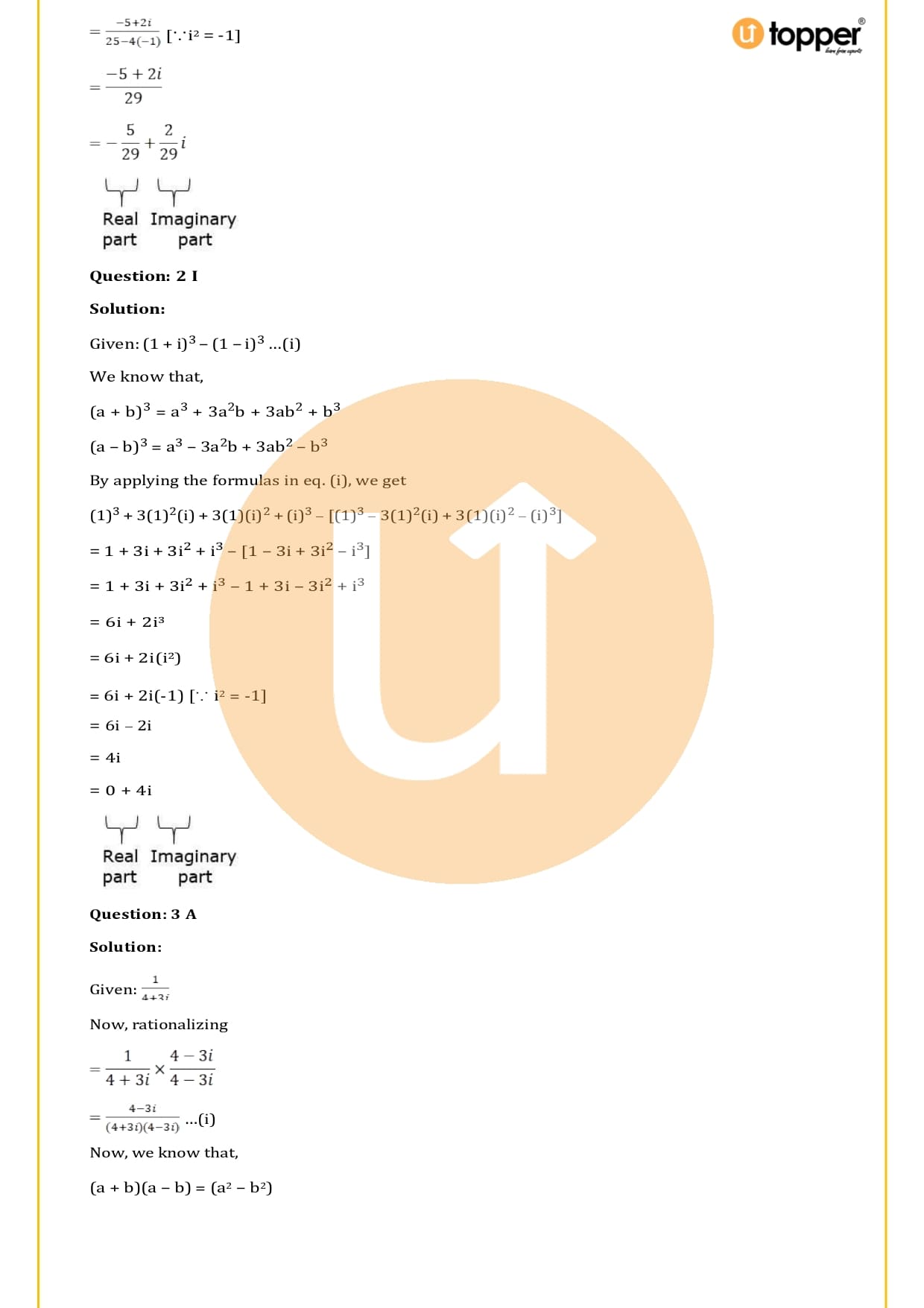

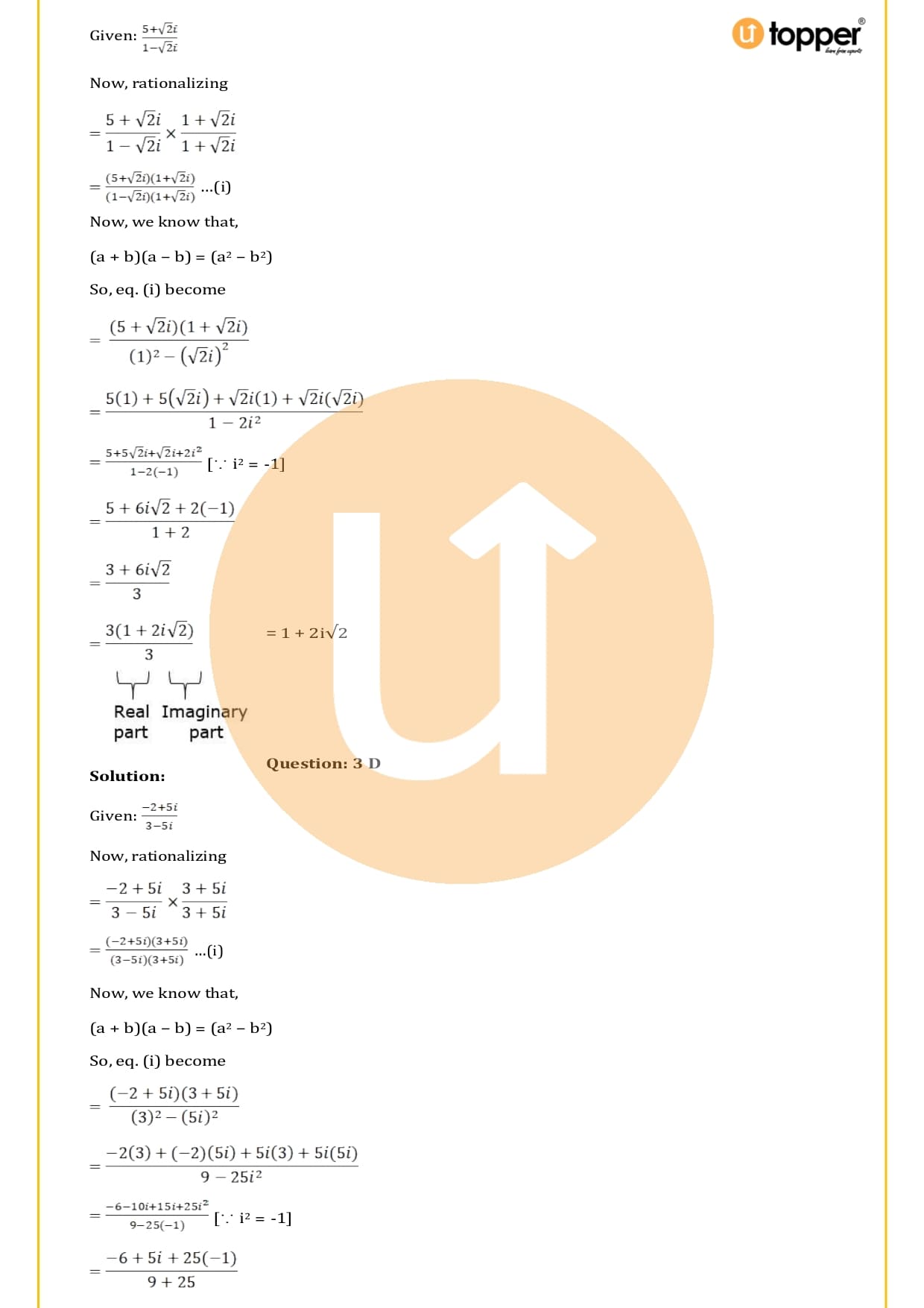

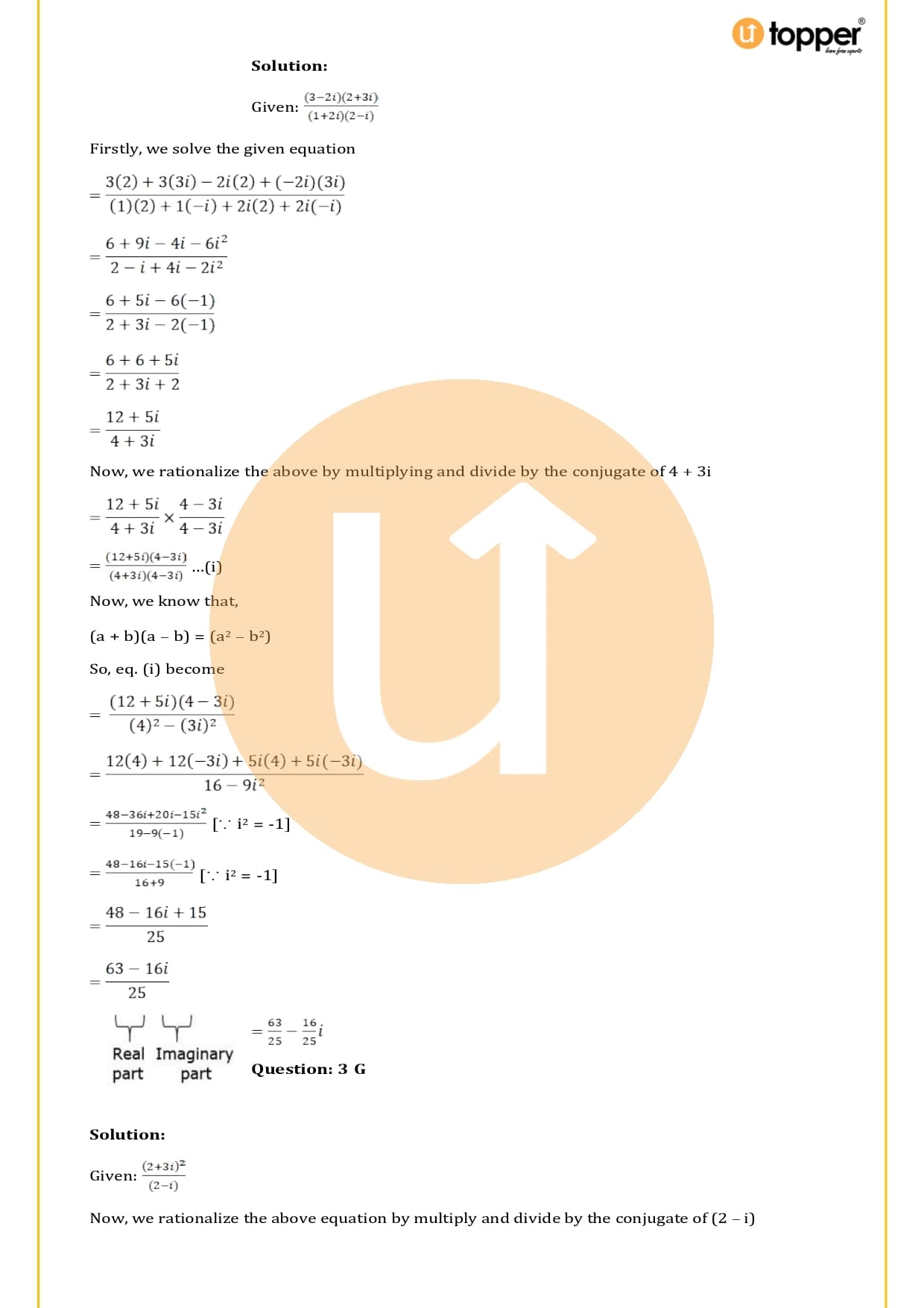



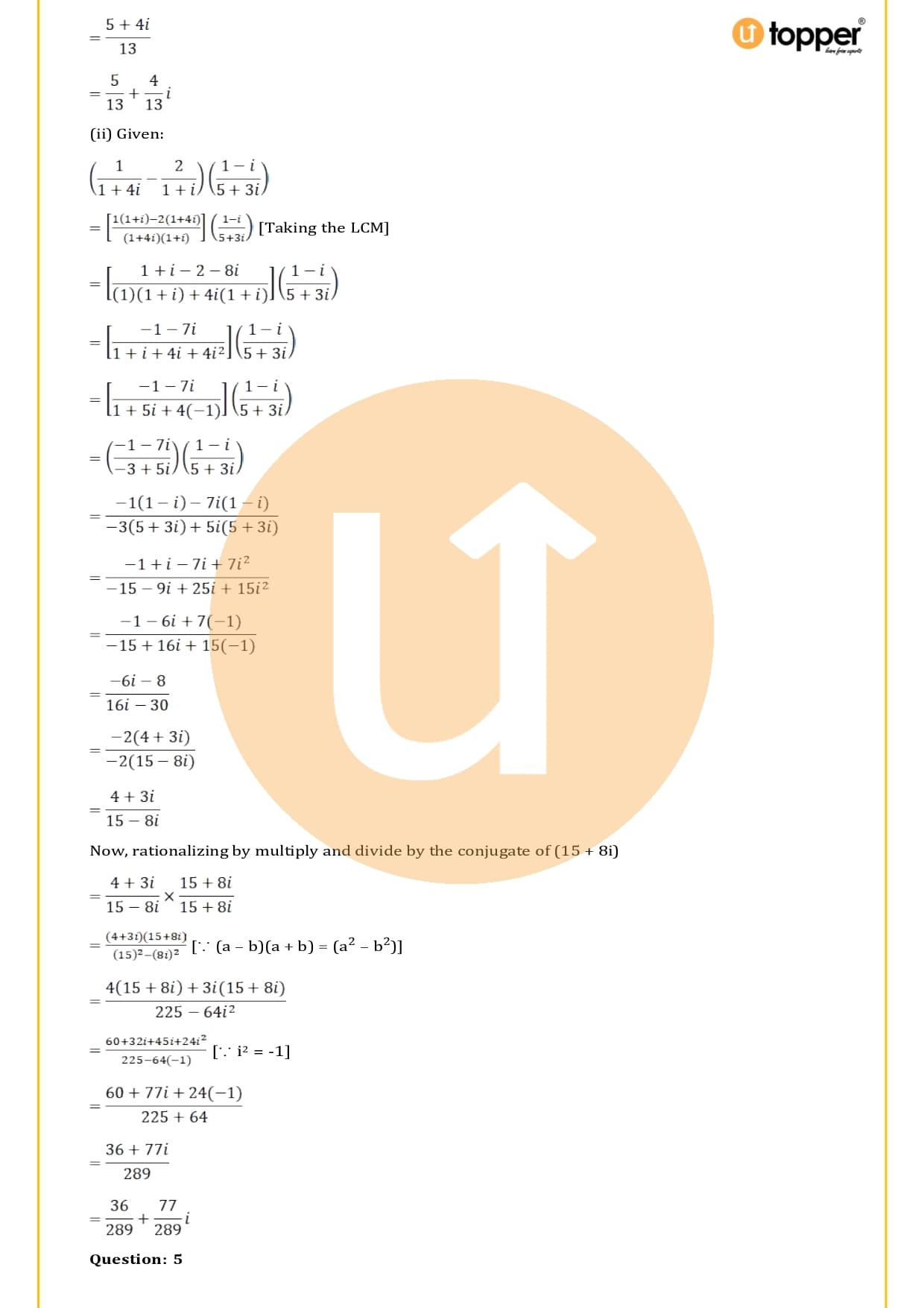







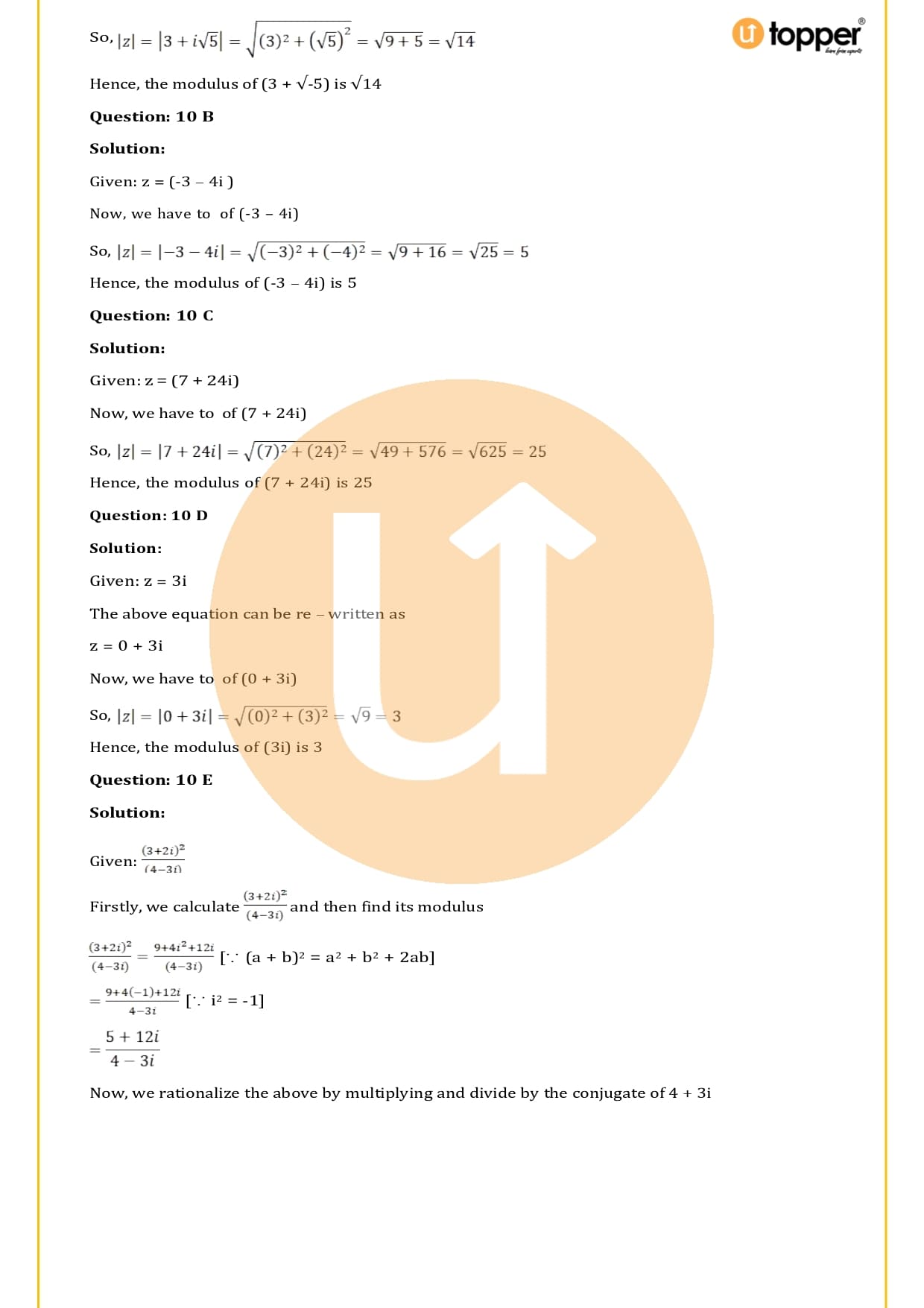





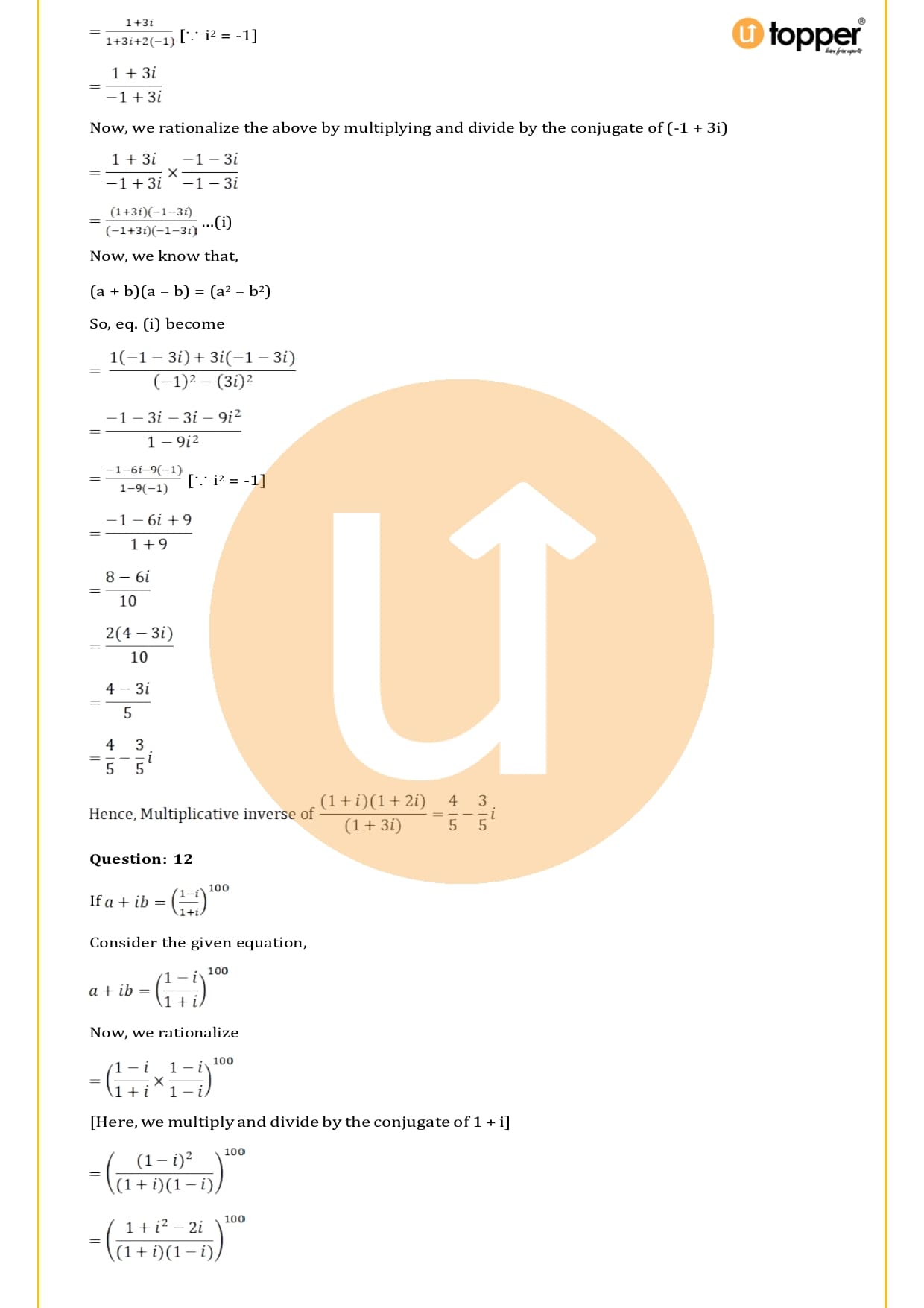


















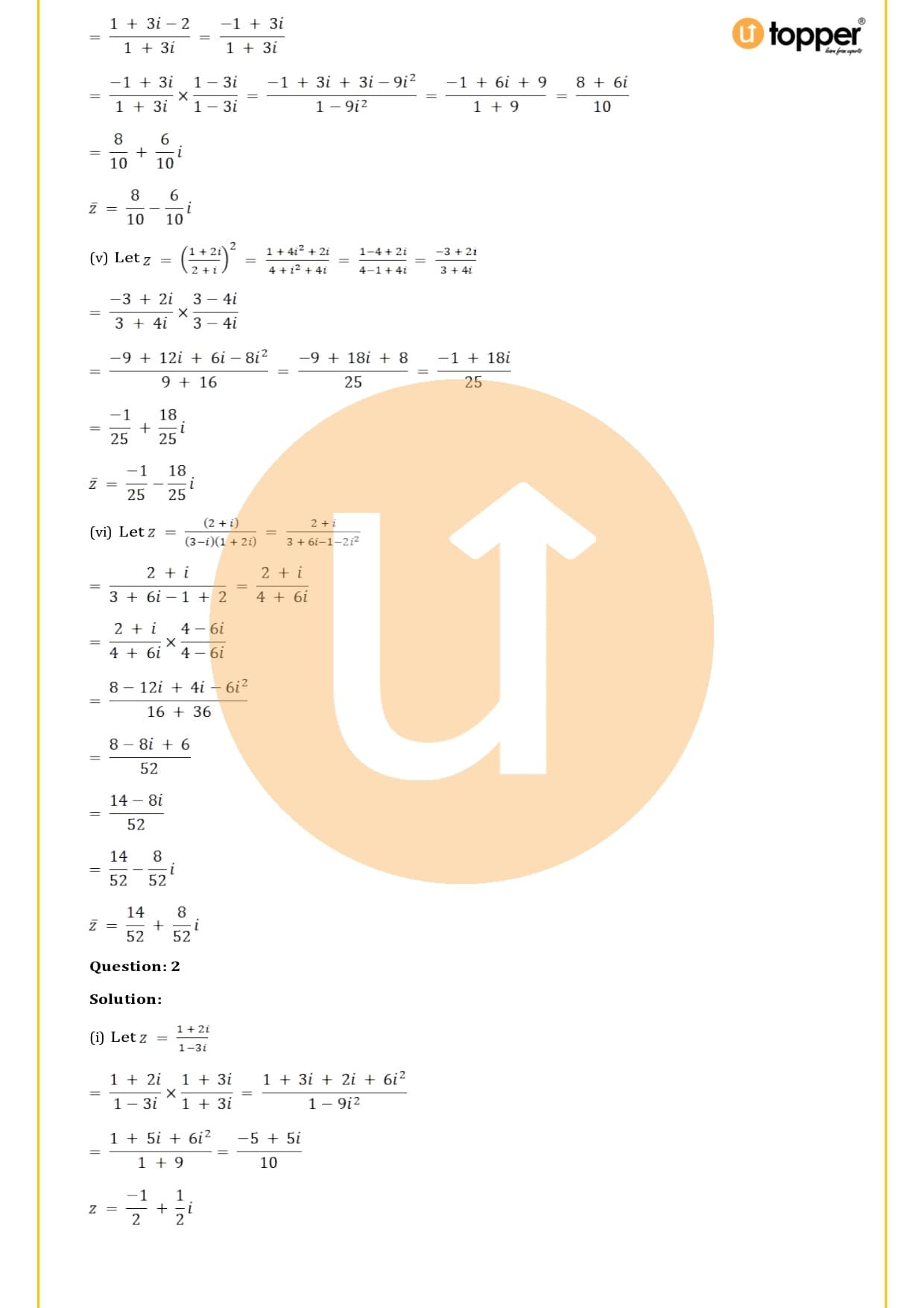
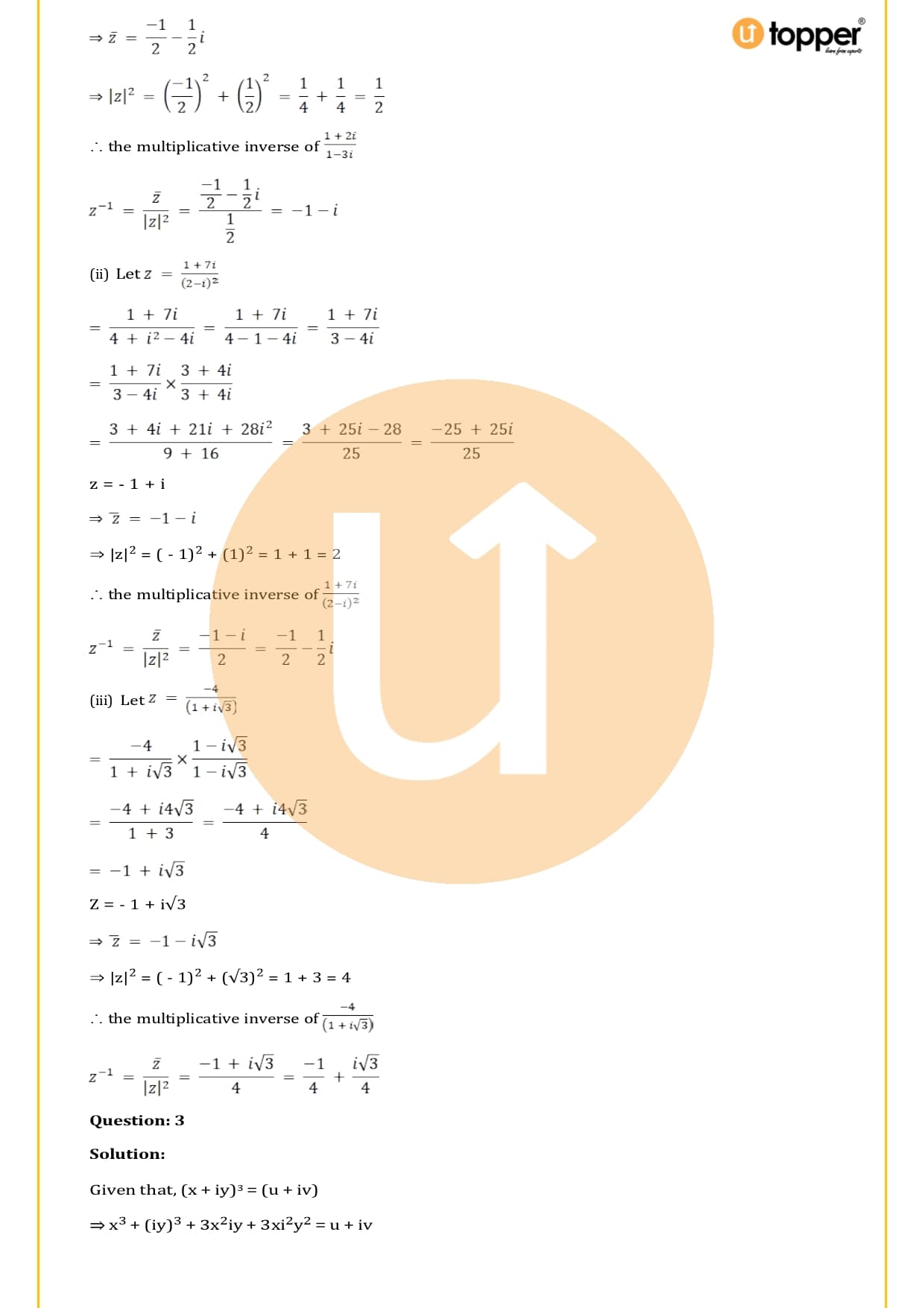




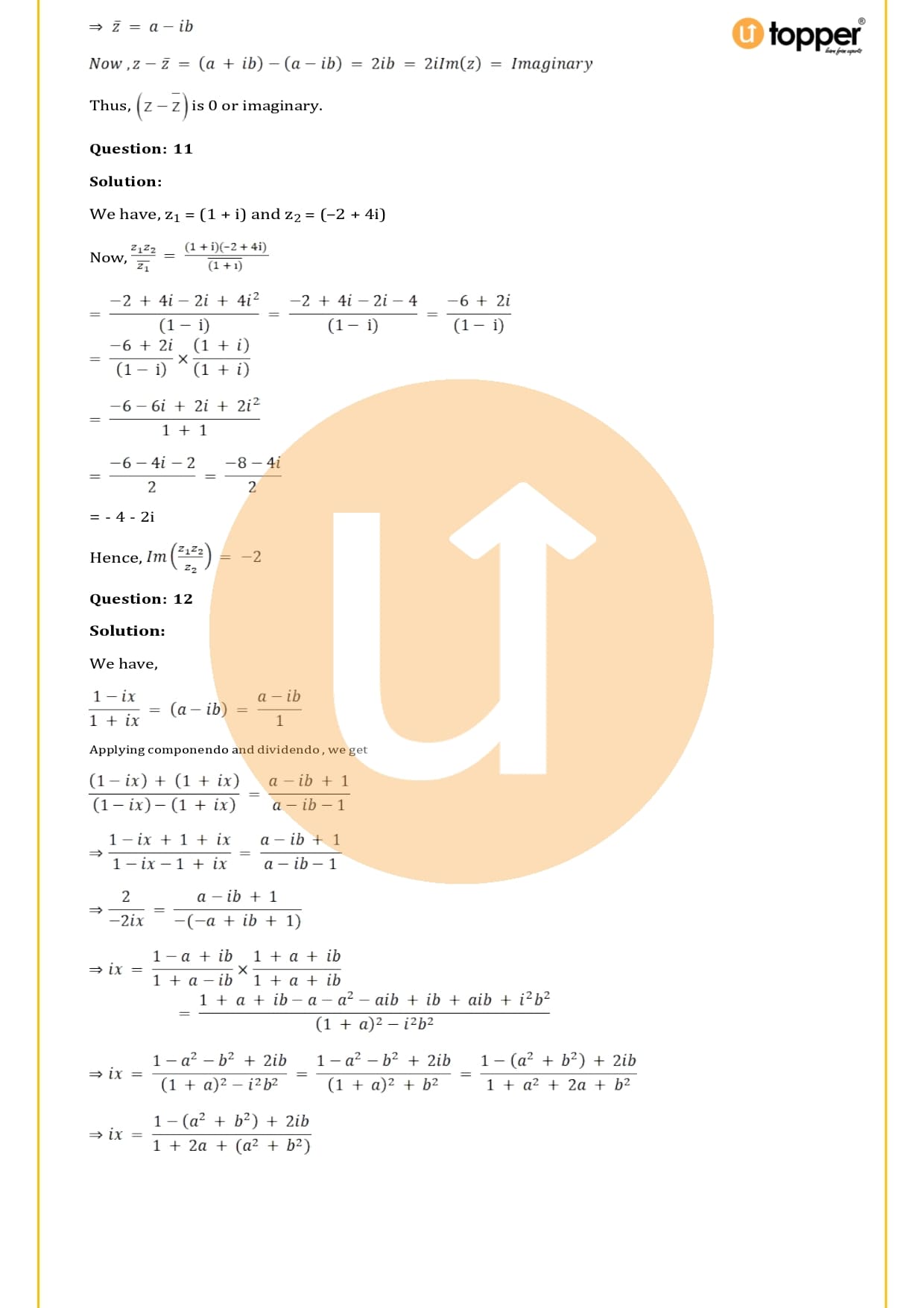




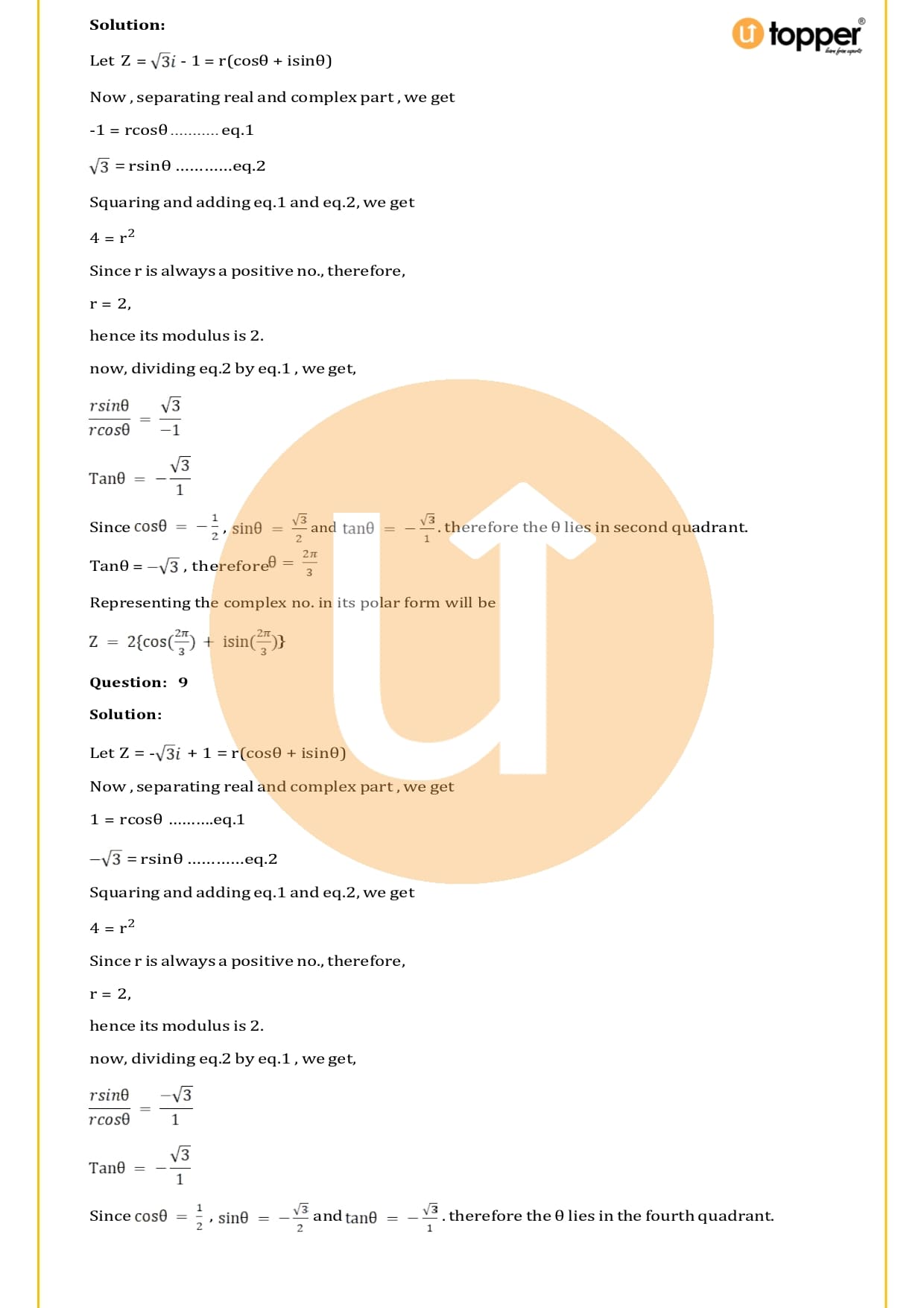





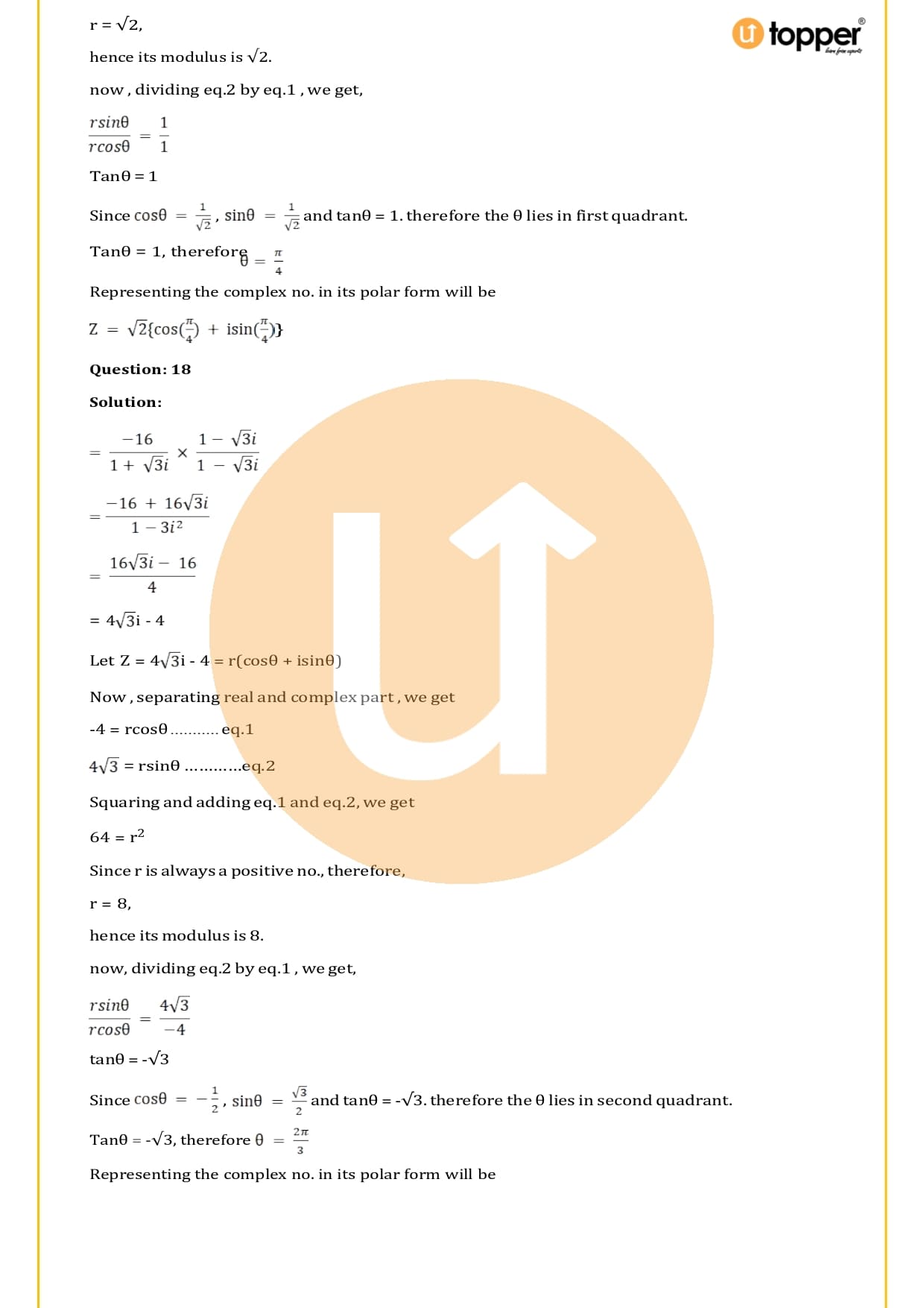








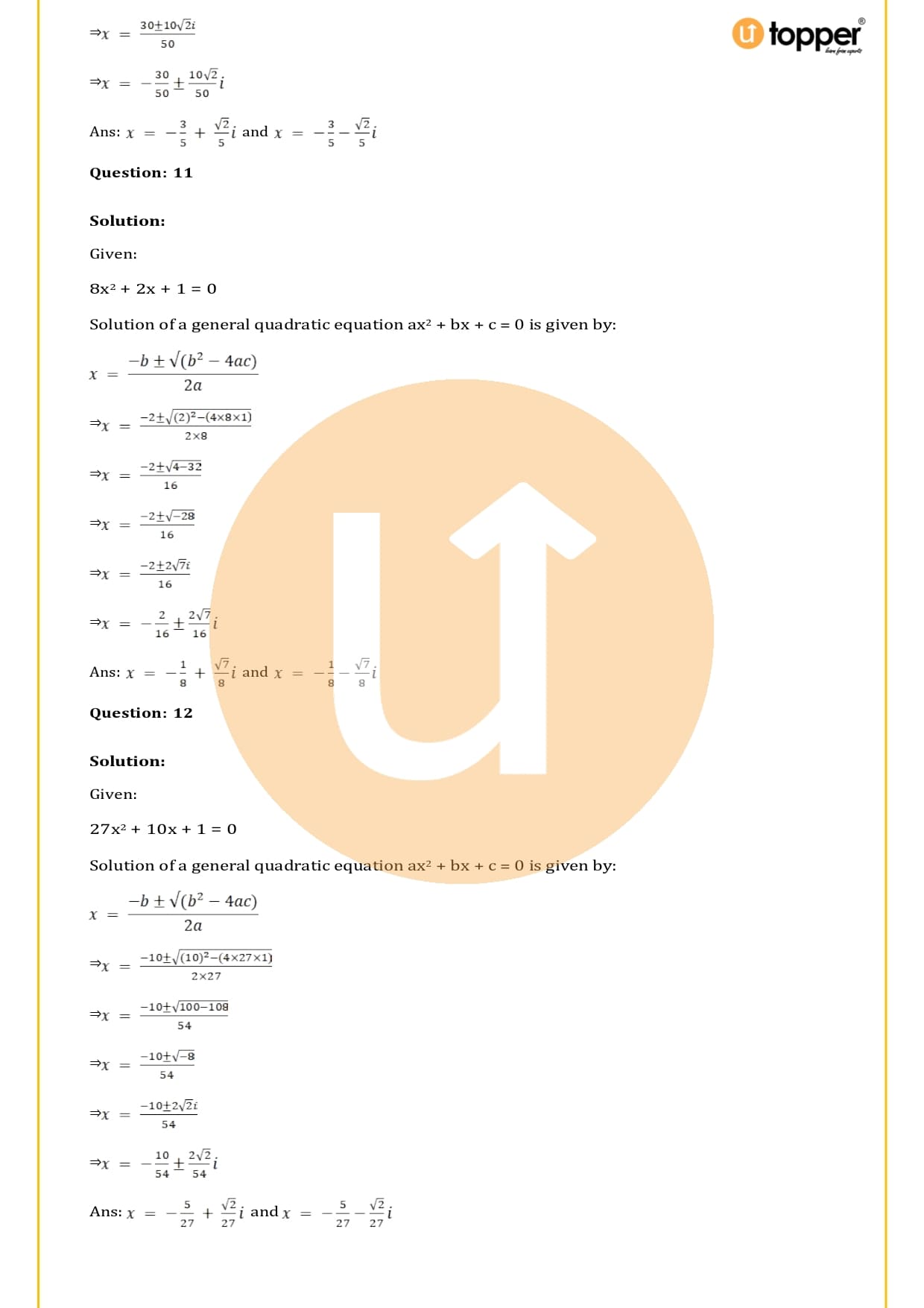






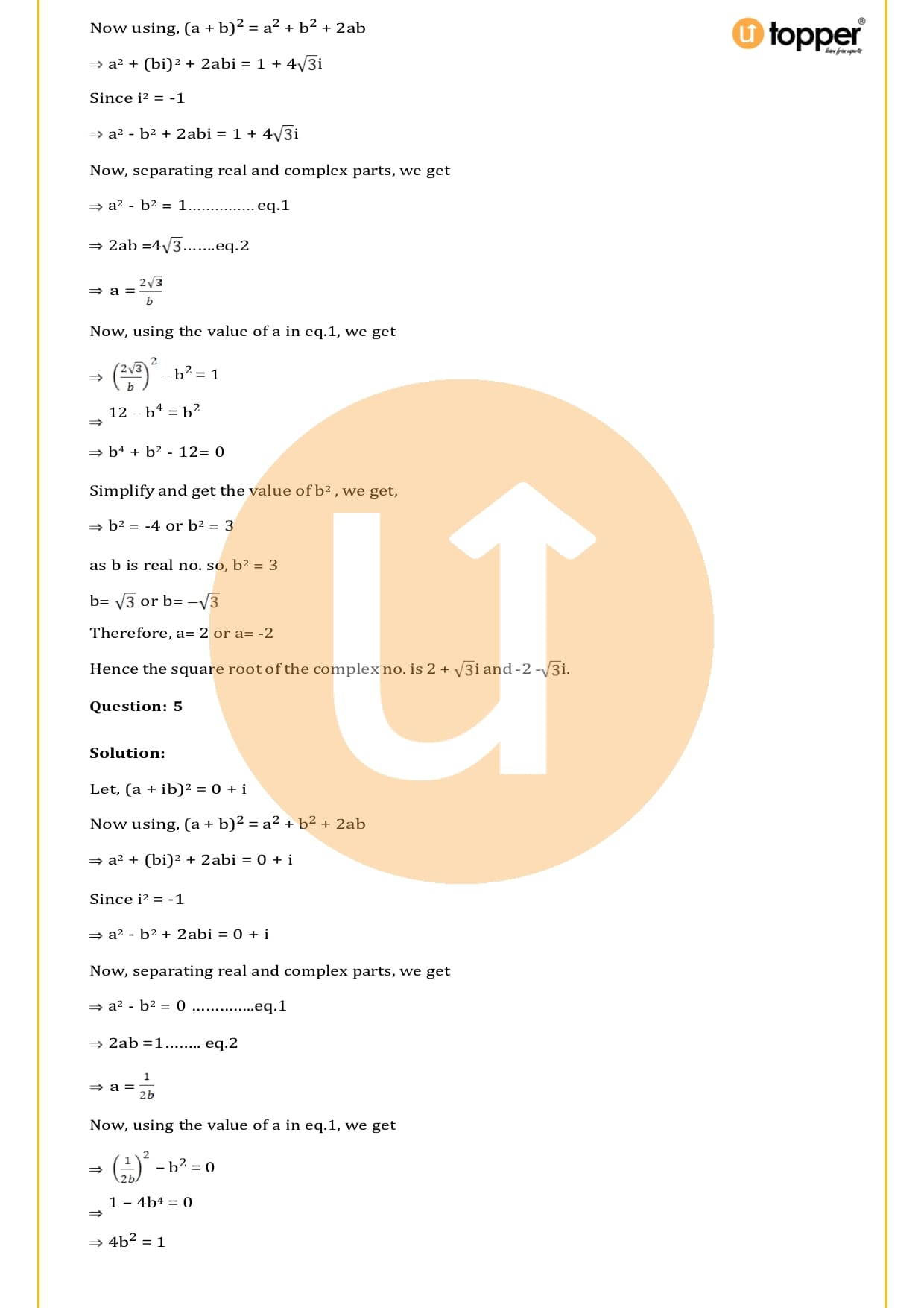














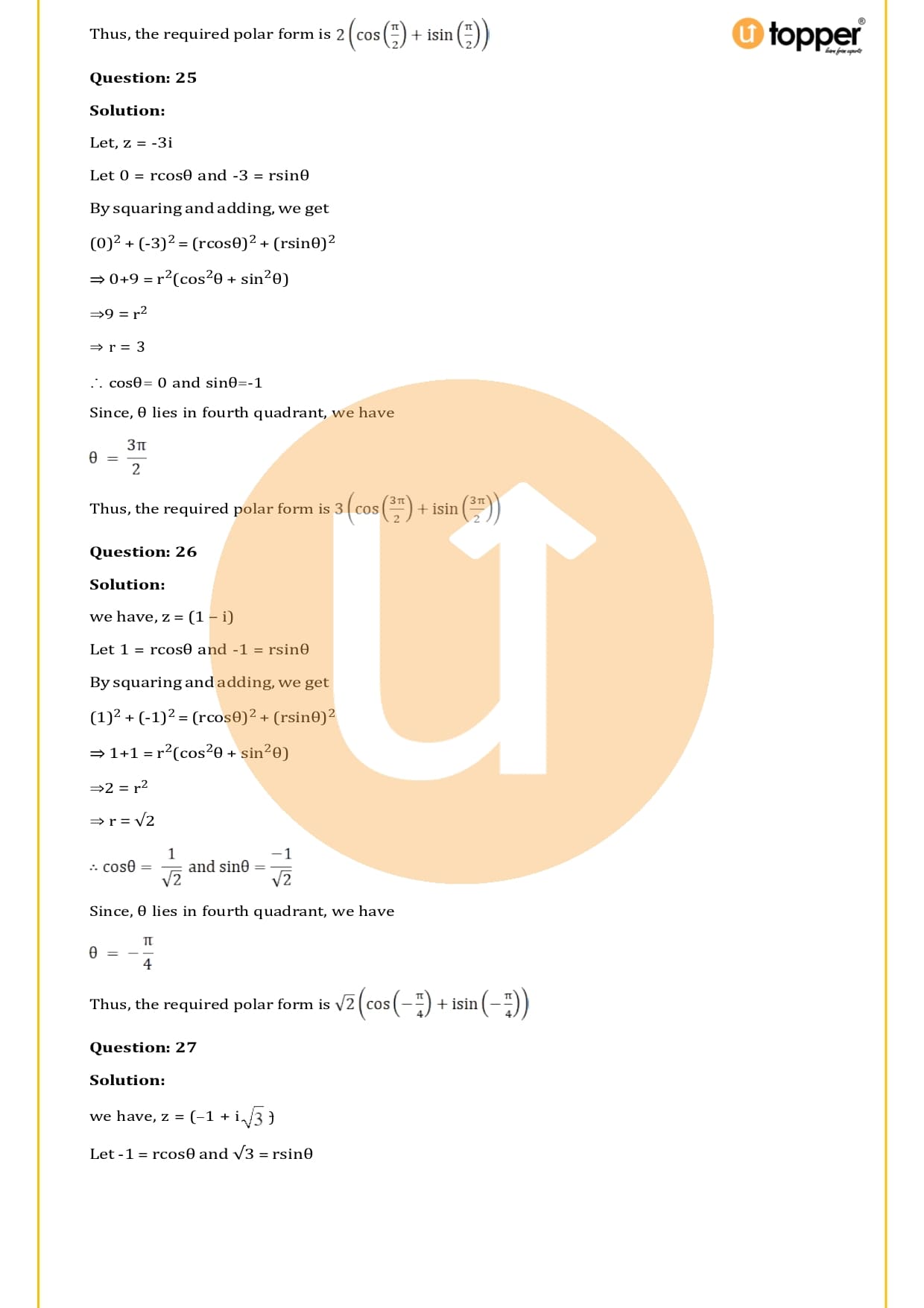

RS Aggarwal Class 11 Solutions Chapter 5 : Key Points
Quadratic Equation: A quadratic polynomial is a polynomial of the second degree. Cubic polynomials are those with a degree of three, and biquadratic polynomials are those with a degree of four. A quadratic equation is a quadratic polynomial f(x) that is equal to 0.
Roots of a Quadratic Equation:
- What x’s values are.
- The part of a quadratic equation that makes the equation true is called the root.
- You will know how to find a quadratic equation in different ways:
Factorization Method
- Direct Formula
- Nature of Roots
- Conjugates Roots
- Roots Under Particular Conditions
RS Aggarwal Class 11 Solutions
Chapter 1: Sets
Chapter 2: Relations
Chapter 3: Functions
Chapter 4: Principle of Mathematical Induction
Chapter 5: Complex Numbers and Quadratic Equations
Chapter 6: Linear Equations in One Variable
Chapter 7: Linear Equations in Two Variable
Chapter 8: Permutations
Chapter 9: Combinations
Chapter 10: Binomial Theorem
Chapter 11: Arithmetic Progression
Chapter 12: Geometrical Progression
Chapter 13: Some Special Series
Chapter 14: Measurement of Angles
Chapter 15: Trigonometric or Circular Functions
Chapter 16: Conditional Identities Involving the Angles of a Triangles
Chapter 17: Trigonometric Equations
Chapter 18: Solution of Triangles
Chapter 19: Graphs of Trigonometric Functions
Chapter 20: Straight Lines
Chapter 21: Circles
Chapter 22: Parabola
Chapter 23: Ellipse
Chapter 24: Hyperbola
Chapter 25: Applications of Conic Sections
Chapter 26: Three Dimensional Geometry
Chapter 27: Limits
Chapter 28: Differentiation
Chapter 29: Mathematical Reasoning
Chapter 30: Statistics
Chapter 31: Probability

Important Things to Keep in Mind
- A complex number’s general form is: z = p+iq, where p is the real part and is written as Re z and q is the imaginary part and is written as Im z.
- If the sum of two complex numbers is real and the product of those numbers is also real, then the numbers are said to be conjugate.
- Any complex number, like a+ib, can be written as (a,b), where an is the real part of the number and b is the imaginary part.
- A quadratic equation is any equation that has a variable with a degree of 2 or more.
- The values of the variables in an equation that make it work are called its roots.
- A problem of degree n has n roots, whether they are real or not.
- If the coefficient of the highest degree term is positive, an odd-degree equation has at least one real root whose sign is the opposite of that of its last term (the constant term).
- Every even-degree equation with a constant term that is negative and a positive coefficient at the highest degree has at least two real roots, one positive and one negative.
- If there is only one change of sign in an equation, it only has one positive root.
- If all of the terms in an equation are positive and the equation uses an odd power of x, then all of its roots are complex.
Discussion of RS Aggarwal Solutions for Class 11 Chapter 5 by Exercise
In this chapter, there are 7 exercises with a total of 142 questions. This means that there will be a lot of questions to help you practise and go over the ideas in the chapter.
- In Exercise 1, you have to figure out the value of I in 15 questions.
- In Exercise 2, there are 28 questions that ask you to simplify complex numbers, find their inverse, conjugate, and modulus, and find their inverse.
- In Exercise 3, there are 12 questions about how to add and subtract complex numbers.
- In the 24 questions in Exercise 4, you have to find the modulus and argument of the complex numbers given and write them in polar form.
- Exercise 5 has 21 questions with quadratic equations that need to be solved.
- In the 14 questions in Exercise 6, you have to figure out how to evaluate the complex numbers.
- In Exercise 7, there are 28 very short answer questions. In this exercise, you are asked to evaluate complex numbers, write numbers as ai+b, write numbers in polar form, etc.

FAQ ( Frequently Asked Questions )
1. What are some important things that RS Aggarwal Class 11 Solutions Chapter 5 talks about?
Ans – In the RS Aggarwal Class 11 Solutions Chapter 5 Complex Numbers and Quadratic Equations, the following are the most important things that are talked about:
- A complex number looks like this: z = p + iq, where p is the real part and is written as Re z and q is the imaginary part and is written as Im z.
- If the sum and product of two complex numbers are both real, then the two numbers are real.
- The quadratic equation is any equation that has a variable with a degree of 2 or more.
- There are a total of n real or imaginary roots in an equation of degree n.
- If the coefficient of the highest degree term is positive, an odd degree tends to have at least one real root whose sign is the opposite of that of its last term. This last term is also called the constant term.
2. What makes the RS Aggarwal Class 11 Solutions Chapter 5 Complex Numbers and Quadratic Equations a special book to use?
Ans – The RS Aggarwal Class 11 Solutions Chapter 5 Complex Numbers and Quadratic Equations is a special book to use because:
- It has all the information you need to know before the tests or even when you are just practising.
- It helps you figure out how to solve some difficult questions from exams like the JEE, which also helps you test yourself.
- When you understand ideas in Class 11, you have a strong base that helps you learn better in Class 12.
